For a frames conservator, making a replica frame for a painting is always a challenging project. Determining what frame is correct for the period demands extensive research in a field that is still young in terms of connoisseurship.
The Temples of Paestum by William Linton
In 2002, the painting The Temples of Paestum by William Linton, bequeathed to Tate in 1876, was cleaned and conserved. At the same time it was decided that the painting should be appropriately framed to complement the restoration.
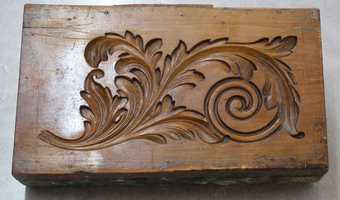
Fig 1. Reverse hand carved boxwood mould
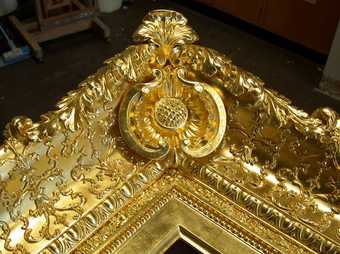
Fig 2. Sample corner just gilded
The original frame was in poor condition. It had been altered in the late nineteenth century to take a glazing door with the original sight edge sawn out and moved back. Several of the decorative mouldings had been replaced only partially. The corner decoration was incomplete, the whitened surface was powdering off, the frame had been cut in half across ways and it was delaminating along the lengths. This frame was archived and a replica frame was commissioned.
Choosing a replica frame design
There were three possible options for the design of the new replica frame:
- A replica of the frame as it stood in 2004 complete with alterations;
- A replica of a similar known unaltered original composition frame of the 1840s;
- Or one that through study and research is as far as possible a copy of the frame as it might have been when new, but that may unavoidably include speculative elements.
The third alternative was chosen. Study of the frame confirmed which parts of the decorative scheme were original and enabled conservators to determine the probable style and size of the missing details. Picture research revealed frames sharing similar ornament to Linton’s, but never an exact copy. However, examination of the original provided a ‘footprint’ to guide the process. To establish the final choice several rough mock-ups, as well as a full sample corner, were made.
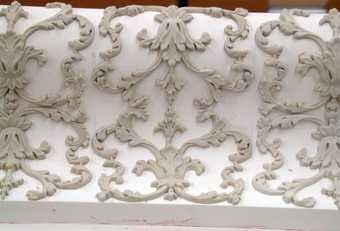
Fig 3. Composition ornament before gilding
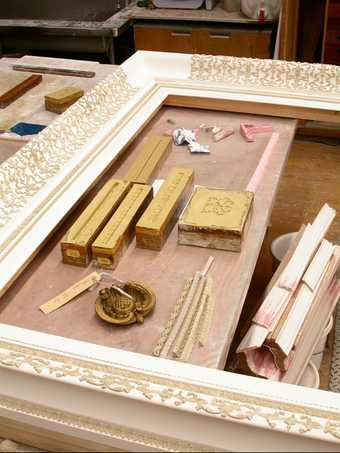
Fig 4. View of frame and polyester resin moulds Linton's Temples of Paestum
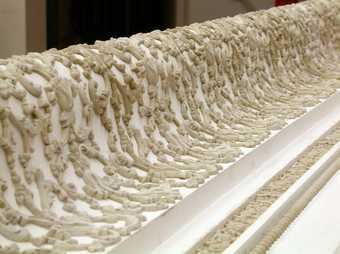
Fig 5. Frame with some ornament yet to be applied
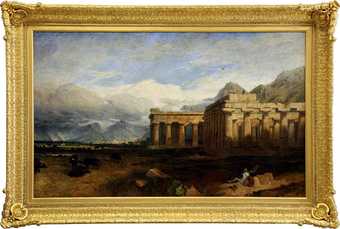
Fig 6. The finished replica frame
Nineteenth century frames and ‘composition’ ornamentation
Until the end of the eighteenth century, picture frames were mostly either plain timber or carved and gilded. As the number of people able to afford art works increased, faster and cheaper ways of making and decorating frames were developed. The most significant new method used ‘composition’ ornament.
Composition, when freshly made, is a pliable material achieved by heating animal glue with water in one pan while dissolving tree resin (rosin) in linseed oil in another, mixing the two at the right moment and adding enough chalk to create a dough-like material. At the time, various extras could be added to the basic recipe to allegedly give the mixture different qualities such as greater plasticity, definition of decorative detail, or long term stability.
At Tate a simple basic recipe has been used since the 1980s. When pliable, composition can then be pressed into beautifully carved boxwood moulds. After removal it is allowed to cool and dry a little before being applied to the carefully sanded and whitened surface of the frame using animal glue.
Creating replica ornamentation
When replicating decorative elements from one frame to use on another, conservators would normally take a silicone rubber mould of the parts to be copied. These moulds would be used to make plaster copies which are glued to a board. They are then used as a positive to make a polyester resin mould, which are pressed out to make new composition ornaments. Composition can be pressed out from rubber moulds if the rubber is firm enough but the sharpness of the detail can be poor.
For the long lines of decoration and the tracery pattern over the body of the replica Linton frame, four polyester resin moulds were made.
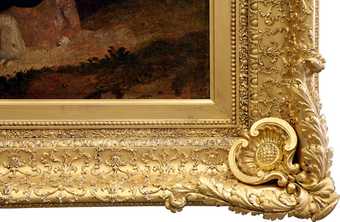
Fig 7. Detail of the corner after toning
The large thistle-like motif in the corner is a plaster copy of the original. Plaster was used for ease of removal from the silicone rubber mould. These elements are screwed to the frame as was done originally. The acanthus leaves and terminal ornament are replicated from a frame in Tate’s collection of an earlier date but appropriate in shape, size and style, though these choices are inevitably speculative. For the corner acanthus leaves, a special type of firm rubber was sourced to allow for pressing out of the composition ornament.
Constructing and finishing the replica frame
The construction process is a lengthy one, requiring several different stages – machining the wood; gluing sections to make the profile; fine tuning the profile by hand; disguising the glue lines with strips of silk; painting the wood with ten or more coats of whitening; sanding by hand with grades of paper up to 500 grit; the jointing of the frame and making good the structure. On top of this, it takes several weeks to apply the ornament and gilding. This frame was oil gilded, with the gold being laid onto a surface of tinted oil size.
Before the painting was fitted, the frame was toned to give it an impression of age, suiting it better to an aged mid-nineteenth-century painting, rather than leaving it with the brighter look the replica would have had when new.
